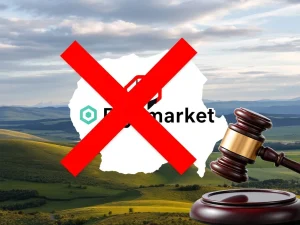Polygon CEO: Why Sustainable DeFi Liquidity is the Future

The world of decentralized finance (DeFi) has seen explosive growth, but it’s often plagued by volatility. A core challenge lies in achieving stable and reliable DeFi liquidity. Polygon Labs CEO Marc Boiron recently weighed in on this critical issue, arguing that many protocols are undermining their own stability by chasing short-term gains over sustainable growth.
Addressing the DeFi Liquidity Crisis
Marc Boiron points to the current state of DeFi liquidity as a “self-inflicted” crisis. He criticizes protocols that rely heavily on high token emissions to offer sky-high annual percentage yields (APYs). While this strategy attracts liquidity quickly, Boiron calls this “mercenary capital” because it’s temporary and disappears as soon as yields drop or token prices fall. This reliance on short-term incentives creates instability and hinders the sector’s maturity.
Boiron argues that this cycle of renting liquidity via token emissions is not sustainable. It dilutes the token’s value over time and doesn’t build genuine loyalty among liquidity providers. To break this cycle, protocols need to shift their focus from fleeting hype to fundamental stability.
Building Sustainable DeFi Through Chain-Owned Liquidity
Polygon’s vision for a more stable future centers on the concept of chain-owned liquidity. Instead of constantly renting liquidity from external providers through emissions, protocols should build treasuries to directly own liquidity positions. This approach, according to Boiron, offers several advantages:
-
Long-Term Stability: Owned liquidity provides a consistent base that isn’t dependent on external provider whims or fluctuating APYs.
-
Capital Efficiency: Protocol treasuries can earn yield on owned liquidity, strengthening the treasury over time rather than depleting it through emissions.
-
Reduced Dilution: Relying less on token emissions for liquidity helps preserve token value.
Boiron acknowledges that building a treasury strong enough for chain-owned liquidity takes time and disciplined management. Methods like capturing protocol fees, using bond mechanisms, or implementing limited, strategic emissions can contribute to building this treasury. It requires patience compared to the quick, albeit temporary, fix of high emissions.
How Polygon‘s POL Token Supports Sustainability
Boiron highlights Polygon‘s own POL token as a blueprint for this sustainable model. He suggests that protocols can utilize their treasury to put POL to work, earning yield. This mechanism supports the protocol’s financial health without the constant need for dilutive token emissions. While POL doesn’t solve all challenges, it provides a foundation that allows protocols to focus on core product development and user retention rather than constantly battling liquidity gaps.
Bridging to TradFi Requires Stability
A critical factor for traditional finance (TradFi) adoption of DeFi is stability and predictability. Institutions require reliable market access and cannot tolerate sudden liquidity drops or slippage spikes that come with unstable liquidity models. Boiron argues that sustainable DeFi models, built on owned liquidity and transparent economics, are essential prerequisites for attracting significant institutional capital. These principles, however, are not exclusive to institutions; they represent sound financial practices beneficial for any protocol aiming for long-term success.
The Path Ahead for Crypto News and Adoption
Looking ahead, Boiron is optimistic about the future of DeFi, particularly with evolving regulatory clarity in regions like Europe and the US. He anticipates increased institutional involvement within the next 12-18 months. By 2026, he envisions a more mature ecosystem characterized by reduced volatility, stronger community governance, and robust financial products bridging DeFi with TradFi and real-world assets. This shift towards sustainable practices, moving away from mercenary capital, is crucial for achieving true decentralization and widespread adoption, which will undoubtedly shape future crypto news cycles.
Conclusion: Sustainable Economics Prevail
Marc Boiron’s message is a call to action for the DeFi ecosystem: sustainable economics win in the long run. While chasing high APYs might offer temporary gains, protocols that prioritize building stable, owned liquidity and transparent models are better positioned for survival and growth. As seen with protocols that have weathered past market cycles, sustainability is key. More teams are recognizing this, signaling a potential shift towards a more resilient and mature DeFi landscape built on the principles championed by Polygon.









